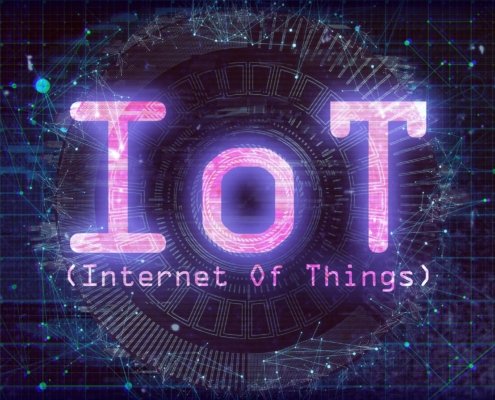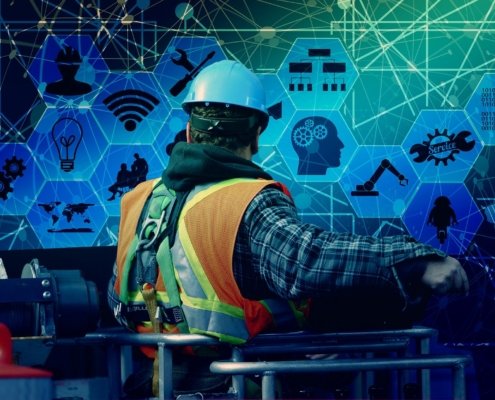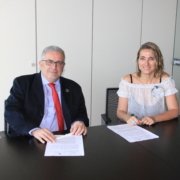Nanosatellites to fuel the Internet of Things
In the past issues of our #BlueInnovation series we have largely focused on any new developments taking place on land and at sea – Smart Seals, Smart Containers, Digital Twins, etc. What about Space? Is there a future for the logistics and transport sector that involves space technologies?
This month we have caught up with Jaume Sanpera, the founder and CEO of Sateliot, to talk about his views and predictions about the journey into the future for transport.
Journey into the future of logistics and freight transport

By: Jaume Sanpera, Founder and CEO of Sateliot
What if the real revolution in the logistics and freight sector came directly from space? That is what Sateliot, the company that will launch the first constellation of nanosatellites to democratize the already known Internet of Things or IOT, is proposing.
In the 21st century, we are entering the era of the totally connected. However, there is still a long way to go to make large-scale connection global and affordable for all. In fact, it is estimated that only 10% of the earth’s surface has mobile coverage, while the remaining 90% is a veritable connectivity desert.
However, what may seem like a whole futuristic movie is getting closer. Specifically, up to 100 nanosatellites weighing about 12 kilograms will make this possible, orbiting some 500 kilometres from the Earth and functioning as cell towers from above offering 100% coverage of the territory and reaching areas where terrestrial networks cannot.
And, although when we talk about the IoT and high technology we usually think of the most cutting-edge and disruptive sectors, the truth is that others that are more traditional but no less developed, such as logistics or goods transport, are likely to reap the most benefits, since the commitment to innovation and digital transformation will allow for an improvement in the operations of infrastructures, warehouses or transport fleets. All of this at a time when ecommerce is booming and requires greasing the supply chain to avoid stock-outs, ensuring that consumers get what they want, when they want it.

Globally, around 20 billion devices are connected to the Internet of Things
What’s more, although the IoT is not new to logistics, with 20 billion connected devices already in use around the world, its real revolution has only just begun. It is estimated that by 2025, shipping companies alone will spend an average of more than $2 million annually on IoT solutions. A practical and simple example of this investment will be smart containers.
Sateliot will make it possible to extend the IOT to the whole territory, so sensors can be installed inside and outside the containers to collect an infinite amount of data during their transit, such as the humidity of the cargo, its temperature, oxygen levels, whether or not there is smoke or even attempts to open them. This data could then be analysed by the company sending the goods, by any intermediaries or by the crew of the ship the cargo is travelling on.
Through this it will be possible to remotely act on reefer containers or warn the crew of the need to hypothetically repair or replace them, identify theft attempts during seal manipulations or put out fires when the presence of smoke is detected, among other multiple actions.
This technology will help make possible exhaustive tracking of the containers, both en route and during possible losses into the sea. This will significantly reduce costs by minimizing the premiums of insurance policies, including theft, looting, fire or heat damage, which are usually very high – it is estimated that 70% of companies that adopt IoT solutions have considered this expense as one of the reasons for adopting this technology. It also will help prevent the loss of perishable goods due to failures of the cooling engine or through helping locate and recover containers that have fallen into the water or been lost in other ports by mistake.

Transport workers will increasingly rely on the information taken from the Internet of Things in their operations – where nanosatellites will come in handy
It is not just containers that will benefit. Ships will be able to use the IoT for the maintenance of their machinery, detection of breakdowns before they occur, using its solutions to monitor fuel consumption and thus adjust it more efficiently, all of which will help result in significant decreases in costs.
In short, monitoring the logistics and transport of goods at any time and place and at affordable prices will be key to improving processes, making them more efficient and cost effective. It will also help increase the autonomy of the devices and help get accurate predictions of demand, all of which will allow for greater capacity at lower costs, resulting in profitability increases across all companies in the sector.
The journey into the future of logistics, which is becoming more intelligent every day, has already begun. Nanosatellites will be on board, drawing the road map to follow.









